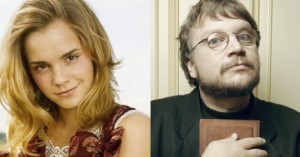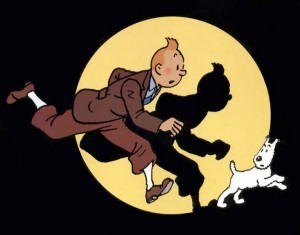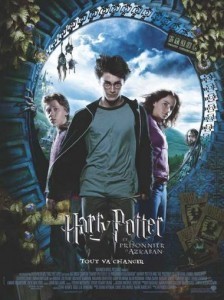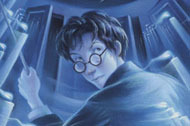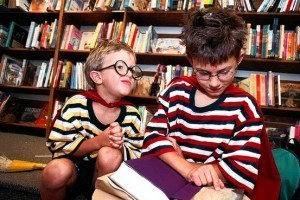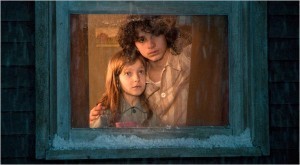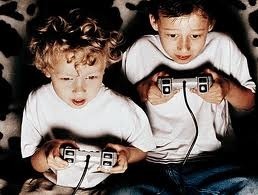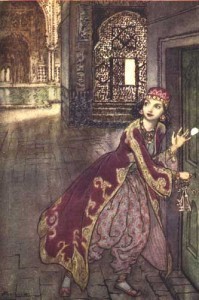Maria Tatar's Blog, page 30
July 23, 2011
New Beauty and the Beast Film in the Works
Not much in the news about this project, but two links below:
http://www.huffingtonpost.com/2011/07/18…
and
http://screenrant.com/emma-watson-beauty…
The latest project set to utilize the creative talents of the Pan's Labyrinth filmmaker is a new version of Beauty and the Beast, as is being co-conceived by Denise Di Novi, the producer of early Tim Burton titles like Edward Scissorhands, The Nightmare Before Christmas , and Ed Wood. Suffice it to say, she and del Toro are undoubtedly planning a darker spin on the famous fairy tale.
Tintin comes to Hollywood in 3-D
"You'll be kids the rest of your lives!" shouted Steven Spielberg to a crowd of more than 6,000 roaring fantasy fans at the Comic-Con International convention here on Friday. "I feel the same way!"
Spielberg has confessed to being a huge fan of J.M. Barrie's "boy who would not grow up." Catch Me If You Can is filled with allusions to the Peter Pan story, and of course there is also Hook, with Robin Williams playing a grown-up Peter Pan who has become a corporate pirate. Here's Spielberg on how the idea for the film developed: "Originally, I was going to make a Peter Pan movie based on the novel, a live-action version like the 1924 Peter Pan silent movie. But something happened, my son Max was born and I lost my appetite for the project. I couldn't be Peter Pan any more. I had to be his father. Anytime anything flies, whether it's Superman, Batman, or E.T., it's got to be a tip of the hat to Peter Pan. To me, flying is synonymous with freedom and unlimited imagination but, interestingly enough, I'm afraid to fly."
For more on The Adventures of Tintin, which will be released on December 23, here is a link to the NYT article about it.
http://www.nytimes.com/2011/07/23/mov...
Nobody in the giant hall asked Mr. Spielberg or Mr. Jackson about the less savory side of Remi, Tintin's creator, who worked for a pro-German publication, Le Soir, during the Nazi occupation of Belgium. In a period of later repentance, Remi cleaned up "Tintin" panels that were tainted by racist portrayals of black Africans and anti-Semitic allusions to Jews. The closest brush came when Mr. Jackson noted that "serious" themes and issues were embedded in some of the comics, though he did not elaborate.
Recommended reading: Jean-Marie Apostolides's The Metamorphosis of Tintin; or Tintin for Adults.
July 19, 2011
Pottermore!
The Washington Post consults a set of experts about the draw of the Harry Potter series and comes to the following conclusion:
One of the most interesting discussions centers on the community of readers. Some have suggested that though reading is often a solitary experience, many of us read Harry Potter as part of a community, discussing, interacting, writing fan fiction. Rowling has seemed acutely aware of her audience and has interacted with that community of readers increasingly through the text as the series went on. (Ebony Elizabeth Thomas)
In fact, with Harry set to move onto the recently announced Pottermore, the series will soon be at the forefront of digital social media.
http://www.washingtonpost.com/blogs/coll…
When you go to the Pottermore website (link below), you will find a video of J.K. Rowling, explaining how Pottermore provides a platform for sharing the experience of reading the series. "an online reading experience like no other." It will also be the "exclusive" place to purchase digital audiobooks and e-books. I would be very curious to know what Henry Jenkins (author of Convergence Culture) thinks of Pottermore.
http://www.pottermore.com/
Here's what Jenkins has written in "Why Heather Can Write: Media Literacy and the Harry Potter Wars," a chapter in Convergence Culture.
"So far, we have seen that corporate media increasingly recognizes the value, and the threat, posed by fan participation. . . . Storytellers now think about storytelling in terms of creating openings for consumer participation. At the same time, consumers are using new media technologies to engage with old media content, seeing the Internet as a vehicle for collective problem solving, public deliberation, and grassroots creativity. Indeed, we have suggested that it is the interplay–and tension–between the top-down force of corporate convergence and the bottom-up force of grassroots convergence that is driving many of the changes we are observing in the media landscape. . . . Corporations imagine participation as something they can start and stop, channel and reroute, commodify and market."
And here's Sony, sponsor of the site. Sony embraces, see below, the "philosophy of make.believe."
Pottermore is an online reading experience built around the world of Harry Potter, created for a new digital generation of readers who can share and participate in the stories, showcase their Potter-related creativity and discover new information about the world of Harry Potter from the author herself. It will also be the exclusive place to purchase, for the first time, eBooks, as well as digital audio books of the Harry Potter series.
As a leading company in entertainment and electronics including games and digital books, Sony is proud to partner with J.K. Rowling to create this interactive story-telling experience. Sony's philosophy of "make.believe" is woven throughout the Pottermore journey, where users are inspired to believe that anything they can imagine, they can make real. Through Pottermore, Sony will be able to reach both current and future generations of Harry Potter fans, and introduce them to products and services beyond their imagination.
July 14, 2011
Harry Potter and the End of Childhood
The critics have finally been won over, and the final installment in the Harry Potter film franchise is receiving rave reviews, including the one by Manohla Dargis in today's New York Times.
http://movies.nytimes.com/2011/07/15/mov…
The movie, the eighth, is tightly focused and as somber and unsettling as it should be considering its apocalyptic events. It's also often beautiful, washed in gray and so drained of other color that at first it looks as if it's in black and white. It's no wonder: Mr. Yates has kicked into Manichaean mode — and it's the fight of good against evil, wizards against Voldemort and his hordes — so the director can be forgiven for almost overplaying the fascist overtones (the students rhythmically marching in the opener are nearly goose-stepping) if not for the juvenile St. Crispin's Day speech at the end.
Oh wait, not everyone has been won over. Here's columnist Frank Bruni, who sees the books and films as the obsession du jour:
As for Potter, I saw 10 minutes of one of the movies, and can't recall if it involved a goblet of fire, a deathly hallow or neither. Hogwarts was mentioned, so I'm now up to speed. It's like Exeter, but with a different kind of spelling test.
http://www.nytimes.com/2011/07/14/opinio…
Bah, humbug, although I admit that it took me more time than I want to admit to be won over by the books. Inspired by the discovery of all seven volumes, orphaned in a large box put out for the trash on the streets of Cambridge, I began re-reading this week. And now I am intoxicated as never before by the mysteries of the world that opens up in your mind as you move from chapter to chapter. It is no wonder that the series has quickly moved from bedtime reading to cultural myth. And here's my favorite passage:
"Tell me one last thing," said Harry. "Is it real? Or has this been happening inside my head?"
Dumbledore beamed at him, and his voice sounded loud and strong in Harry's ears even though the bright mist was descending again, obscuring his figure.
"Of course it is happening inside your head, Harry, but why on earth should that mean that it's not real?"
July 9, 2011
The Word Triumphant
Norman Lebrecht writes about the cult of reading that began to flourish with the release of each new Harry Potter book. He offers some interesting comparisons with Dickens and reminds us that it took a while for the books to catch fire. The first print run was 500 copies, sold mainly to libraries! Pottermania is hitting a new high with the release of the final film, and the Wall Street Journal has multiple articles about the films in addition to this one about how reading made a comeback around the time the second installment of the series came out.
Not since the serial novels of Charles Dickens in the middle of the 19th century had the works of a single author excited such universal and immediate interest. The parallels with Dickens, born 200 years ago next February, are multiple and compelling. "What happens to Little Nell?" crowds shouted in New York harbor to incoming ships that carried the latest installment of "The Old Curiosity Shop." "Is Hermione all right?" booksellers were asked as midnight purchasers scanned the closing pages of "Harry Potter and the Half-Blood Prince," knowing a main character was to die.
http://online.wsj.com/article/SB10001424…
July 8, 2011
Breillat's Sleeping Beauty
Manohla Dargis reviews Catherine Breillat's new film based on Perrault's "Sleeping Beauty." Great news here about a "Beauty in the Beast" in the works, to complete a trilogy of fairy-tale films that also includes "Bluebeard." My favorite reworking of "Sleeping Beauty" remains Pedro Almodovar's Talk to Her (2002).
"Beauty and the Beast" (the title could work for some of her other films) will be the final chapter in a projected trilogy that I hope she expands: Andrew Lang collected 12 volumes of fairy tales, some ripe for her singular deconstructions. The pleasures of Ms. Breillat's work are its commitment and seriousness and its raw, sometimes very funny perversity: she's lets everything hang out, without apologies.
http://movies.nytimes.com/2011/07/08/mov…
July 4, 2011
Disney's Seven Deadly Sins
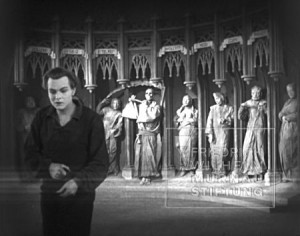
http://jezebel.com/5802289/the-seven-dea…
Artist Chris Hill takes seven Disney figures and turns them into allegories of evil. Snow White succumbs to gluttony when she reaches for that apple; greedy Ariel is never satisfied and gives new meaning to upward mobility; and Belle, with her fabled beauty, personifies vanity. Tinker Bell is also included: Here's Tink, not a princess but the most suitable character to represent the battle with Envy. Tink's envy of Wendy and Peter's relationship causes her to do some pretty mean things, but in the end she overcomes her envy and grows to be the sassy fairy we all know and love.
In Off with Their Heads, I wrote about fairy-tale Daughters of Eve and their seven sins and, now, in retrospect I wish I had included a section on these Disney heroines. JK
The image comes from Fritz Lang's Metropolis, and shows Freder's hallucinatory encounter with the seven sins.
July 2, 2011
SCOTUS cites the Brothers Grimm
In a 7-2 decision, the Supreme Court overturned California's effort to regulate access to violent video games. Scalia wrote the majority opinion and declared that video games deserve the full protection of the First Amendment.
"Like the protected books, plays and movies that preceded them, video games communicate ideas — and even social messages — through many familiar literary devices (such as characters, dialogue, plot and music) and through features distinctive to the medium (such as the player's interaction with the virtual world)," Justice Scalia wrote. "That suffices to confer First Amendment protection."
He added: "Certainly the books we give children to read–or read to them when they are younger–contain no shortage of gore. Grimm's Fairy Tales, for example, are grim indeed. As her just deserts for trying to poison Snow White, the wicked queen is made to dance in red hot slippers 'till she fell dead on the floor, a sad example of envy and jealousy.' . . . Cinderella's evil stepsisters have their eyes pecked out by doves. . . . And Hansel and Gretel (children!) kill their captor by baking her in an oven."
(I was amused by the fact that the clerks wrote "Grimm's Fairy Tales" rather than "Grimms' Fairy Tales." That does not detract from a sound opinion that recognizes that parents must be responsible for regulating content, even if not all parents are responsible. The opinion can be found at the following link: http://www.supremecourt.gov/opinions/10pdf/08-1448.pdf
http://www.nytimes.com/2011/06/28/us/28s… –for further reading.
And for the other side of the argument:
http://www.miamiherald.com/2011/07/02/22…
In his dissent, Justice Breyer asked the right question: "What sense does it make to forbid selling to a 13-year-old boy a magazine with an image of a nude woman, while protecting the sale to that 13-year-old of an interactive video game in which he actively, but virtually, binds and gags the woman, then tortures and kills her?"
Read more: http://www.miamiherald.com/2011/07/02/2295768/justices-dont-live-in-the-real.html#ixzz1QwaOweU0
July 1, 2011
I Rest My Case on the Importance of Fairy Tales
Today's NYT has a wonderfully eloquent defense of fairy tales. Valerie Gribben charts her love affair with fairy tales, describes how she discarded them when she grew up and went to medical school, and how she returned to them in her third year of medical school during her rotations.
Fairy tales are, at their core, heightened portrayals of human nature, revealing, as the glare of injury and illness does, the underbelly of mankind. Both fairy tales and medical charts chronicle the bizarre, the unfair, the tragic. And the terrifying things that go bump in the night are what doctors treat at 3 a.m. in emergency rooms.
So I now find comfort in fairy tales. They remind me that happy endings are possible. With a few days of rest and proper medication, the bewildered princess left relaxed and smiling, with a set of goals and a new job in sight. The endoscopy on my cross-eyed confidante showed she was cancer-free.
http://www.nytimes.com/2011/07/01/opi...
I just ordered her Fairytale Trilogy, which she wrote when she was sixteen. She also has a blog: https://valeriegribben.wordpress.com/
June 15, 2011
Immersed and Invisible
Jhumpa Lahiri, author of The Namesake and The Interpreter of Maladies, reflects on her childhood reading and writing in the latest issue of the New Yorker. Most of the books she read as the daughter of an immigrant family had characters with whom she could not identify, as she points out below. In my book Enchanted Hunters, I tried to make the case that children rarely identify with the misfits, rebels, runaways, truants and orphans they encounter in the books they read. Instead, child readers are drawn into the excitement of adventurous lives and become "more like witnesses who watch events unfold and read the minds of the characters experiencing them."
Here's Jhumpa Lahiri:
I was aware that I did not belong to the worlds I was reading about: that my family's life was different, that different food graced our table, that different holidays were celebrated, that my family cared and fretted about different things. And yet when a book was in my possession, and as I read it, this didn't matter. I entered into a pure relationship with the story and its characters, encountering fictional worlds as if physically, inhabiting them fully, at once immersed and invisible.
Read more http://www.newyorker.com/reporting/2011/06/13/110613fa_fact_lahiri#
Stieg Larsson modelled Lisbeth Salander in his Millennium-Trilogy on Pippi Longstocking. My bet is that he too did not identify with Astrid Lundgren's character and instead entered into a relationship with her and her world, "immersed and invisible."
Maria Tatar's Blog
- Maria Tatar's profile
- 316 followers


